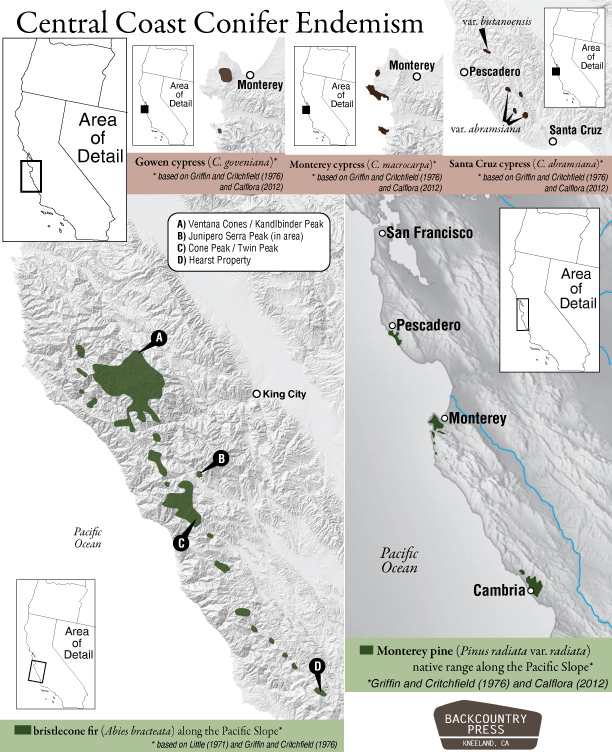Original Publication DATE: 3/29/2013
I have always been a fan of the opportunists. If I had to pick a favorite bird it would be the noble turkey vultures—who soar thermals from coast to coast, contemplating a smorgasbord of fetid and rotten treats for daily sustenance. Douglas-firs are one of the most ubiquitous western conifers—taking purchase on high mountain peaks, coastal sand dunes, temperate rainforests, and sterile serpentine soils. However, some species are so specialized that, without proper and specific biotic and abiotic interactions, they would have long-gone extinct or never evolved at all.
In ecology, the term endemism defines when an organism is unique to a certain region like an island or mountain range. Endemic species are either newly evolved to fit a changing landscape (neoendemic) or a relict of a once broader existence, now restricted to a smaller region (paleoendemic). Neoendemics are species that have adaptively radiated from an older one through vicariance–with an ecology sculpted by edaphic, climatic, and topographic isolation in “recent” history. Relative to other conifers, some of California’s cypresses are an examples of this type of endemism. Through microsite isolation new species have evolved from a common ancestor where new traits are selected through ecological release to fit specific environments. Paleoendemics, like the Redwoods, Monterey cypress, Monterey pine and Santa Lucia fir once had broader ranges but are now restricted, through climatic changes, to environments which mimic those of the ancient past.

Continue reading “Conifer Endemism on the Central California Coast”